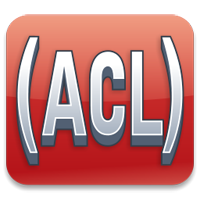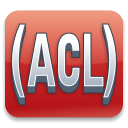In this issue
- Allegro CL 10.1 - Now Available!
- Tech Corner Article: Allegro CL Now Runs on the ARM-64 Platform
- Trappist-1 Exoplanets and Allegro CL - The SIRPASS Story
- Bloor Research Positions Franz's AllegroGraph as a 'Champion' and Highest Ranked in Graph Database Market
- Recorded Webcast: The Power of Machine Learning and Graphs
- Database Trends and Apps Report - Building a Data Lake for the Enterprise
- Upcoming Events - Graph Day and GeoInt
- Recent Articles about Franz
- Follow us on Google Plus, Twitter, LinkedIn, and YouTube
- Training Schedule
Allegro CL 10.1 - Now Available!

ACL 10.1 New Features
|
See here for additional information.
Tech Corner Article: Allegro CL Now Runs on the ARM-64 Platform

The ARM-64 processor (also called the ARMv8, the Aarch64, and the ARM64) is a RISC processor particularly adapted to smaller devices. The Wikipedia description is aten.wikipedia.org/wiki/ARM_architecture and the company which designed the processor describes it at www.arm.com/products/processors. Allegro CL 10.1, recently released, runs on the ARM-64. Only the 64-bit version of Allegro CL is supported. There are both SMP and non-SMP versions. Common Graphics and the IDE runs on the non-SMP version. (CG and the IDE are not currently supported on any Linux SMP version.)
See here for the details.
Trappist-1 Exoplanets and Allegro CL - The SIRPASS Story

Astronomers are celebrating a new discovery, a treasure trove of planets found. The big news is that around a very nearby, cold, small star, there are seven rocky Earth-sized planets, all of which could potentially have liquid water. Three of them orbit in the habitable zone around the star. The planetary system is called Trappist-1. JPL's David S. Mittman and STSI's Robert Hawkins have co-authored a white paper that describes the project environment in which the Spitzer Integratesd Resource Planning and Scheduling System (SIRPASS) was developed and used in operations. SIRPASS is the last known adaptation of the Plan-IT II planning and sequencing tool. In the paper, they explain that because the Plan-IT II software architecture utilizes a highly object-oriented design, the core software can be easily extended for specific scheduling problem domains. Plan-IT II is developed in Allegro CL, a dynamic object-oriented development environment for ANSI Common Lisp from Franz, Inc.
See here for additional information.
Bloor Research Positions Franz's AllegroGraph as a 'Champion' and Highest Ranked in Graph Database Market

"AllegroGraph is the highest ranked product in its class, and, thanks to Gruff, it was rated as the easiest product to use." - Bloor Research
|
AllegroGraph is a database technology that enables businesses to extract sophisticated decision insights and predictive analytics from highly complex, distributed data that cannot be uncovered with conventional databases. Unlike traditional databases or NoSQL databases, AllegroGraph employs semantic graph technologies that process data with contextual and conceptual intelligence. AllegroGraph is able run queries of unprecedented complexity to support predictive analytics that help organizations make more informed, real-time decisions.
For additional information, see here.
Recorded Webcast: The Power of Machine Learning and Graphs

Graphs and Machine Learning have long been a focus for Franz Inc. and currently we are collaborating with a number of companies to deliver the ability to understand possible future events based on a company's internal as well as externally available data. By combining machine learning, semantic technologies, big data, graph databases and dynamic visualizations we will discuss the core components of a Cognitive Computing platform. We discussed example Cognitive Computing platforms from Ecommerce, fraud detection and healthcare that combine structured/unstructured data, knowledge, linked open data, predictive analytics, and machine learning to enhance corporate decision making.
To view the recorded webcast, see here.
Database Trends and Apps Report - Building a Data Lake for the Enterprise

Data lakes are forming as a response to todayfs big data challenges, offering a cost-effective way to maintain and manage immense data resources that hold both current and future potential to the enterprise. However, enterprises need to build these environments with great care and consideration, as these potentially critical business resources could quickly lose their way with loose governance, insecure protocols, and redundant data.
To learn about how AllegroGraph is in use for Montefiore Medical Center's Semantic Data Lake, see here.
Upcoming Events - Graph Day and GeoInt
Please join us for Graph Day SF 17 in San Francisco - June 17th and GEOINT 2017 June 4-7 in San Antonio.
 | |
 |
Recent Articles about Franz
 |
|
 |
|
 |
|
Follow us on Google Plus, Twitter, LinkedIn, and YouTube
Training Schedule
 BECOME ALLEGRO CERTIFIED - To obtain your Allegro CL Certification enroll in our LIVE Program which offers developers an opportunity to learn and improve their Lisp programming skills from the comfort of their home or office while interacting with the Franz instructor.
BECOME ALLEGRO CERTIFIED - To obtain your Allegro CL Certification enroll in our LIVE Program which offers developers an opportunity to learn and improve their Lisp programming skills from the comfort of their home or office while interacting with the Franz instructor.
Lisp Programming Series Level I: Basic Lisp Essentials - June 7, 14, and 21
Lisp Programming Series Level II: Specialized Components of Lisp - July 5, 12, and 19
For additional information and to register, see here.




